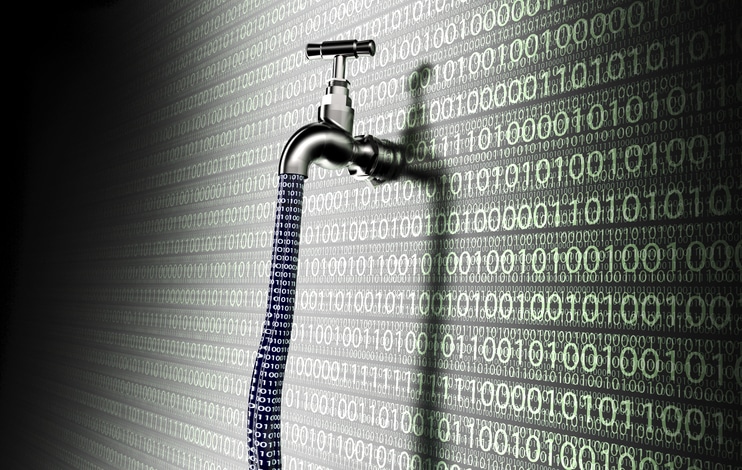Data leakage happens when someone within an organization transmits data to an unauthorized recipient or leaves a gap that allows unauthorized people to access the data.
Businesses of all sizes rely on data for day-to-day operations. Data powers essential processes and allows business managers to make informed decisions. But in the wrong hands, the data can expose the business to risk that could lead to legal issues, financial losses, bankruptcy, and even closure.
Over the years, we’ve seen businesses fall victim to pernicious threats. The trend has been growing, with projections even showing that by 2025, cybercrime will cost the world $10.5 annually. The key to overturning this formidable rising data breach trend is to prevent situations that could potentially lead to data breaches.
In this article, we’ll focus on data leakage. Data leakage is one of the many ways bad actors gain access to critical data.
We’ll discuss in detail:
We’ll also tell you how CenterPoint IT can protect your company from data leakage and similar threats.

Data leakage happens when someone within an organization transmits data to an unauthorized recipient or leaves a gap that allows unauthorized people to access the data. Either action can be deliberate or accidental and can occur via email, the web, or even mobile storage devices like USBs, optical media, and laptops.
Data loss due to insider threats is a growing problem, but the prevalence has increased since the pandemic hit. In fact, 2020 was a landmark year for data breaches, recording a staggering 36 billion records exposed. 2021 was even worse. By October, breaches had surpassed 2020 numbers by 17%. This is primarily due to the adoption of the work-from-home and bring-your-device models that create vulnerabilities in data.
Whether accidental or deliberate, data leakage is a severe security threat and can have far-reaching consequences, including:
If your business lacks the resources to support an in-house data loss prevention system, outsourcing to Centerpoint IT might be the answer.
There are many reasons why employees, third-party contractors, system administrators, and other people who have legitimate access become inside attackers. Some include:
Common indicators of data leakage include:
Here’s how you can protect your company from potential data leakage:
Data leakage can happen to organizations of all sizes. However, the impact of data leaks varies depending on the hierarchical levels. For example, companies like Netflix or PayPal store highly sensitive data like credit card numbers, names, addresses, email, phone numbers, etc. A leak at this level could mean exposing all these user details to bad actors. It would also mean expensive lawsuits against the company.
But big companies have the resources to invest in systems and processes that can detect data leaks as soon as they happen. They also invest heavily in cybersecurity and have thorough data security protocols that keep data leak cases to a minimum.
But attackers don’t just go after the big companies. They also target small and mid-sized businesses. In fact, small and mid-sized businesses are often attacked because they’re easy targets. They’re often unprepared for attacks because they assume they’re too small to target and don’t have a strong financial backbone.
SME and large companies can benefit from outsourcing data leak prevention services to managed service providers like Centerpoint IT. With an expert taking care of the data leak issue, managers can focus on running the business.
Centerpoint IT is a leading managed IT service provider in Atlanta. We provide a range of services to help your business prevent data leakage and ensuing issues. We can also monitor systems and deliver regular alerts on suspicious activities, network attacks, etc. Contact us today to learn more.
Call our business managed IT services department directly at (404) 777-0147 or simply fill out this form and we will get in touch with you to set up a getting-to-know-you introductory phone call.
Fill in our quick form
We'll schedule an introductory phone call
We'll take the time to listen and plan the next steps
11285 Elkins Rd Suite E1, Roswell, GA 30076
© Copyright 2024 Centerpoint IT. All Rights Reserved. Website in partnership with Tech Pro Marketing. | Privacy Policy
Get Immediate Help For All Your Technology Issues (404) 777-0147

If you want our team at Centerpoint IT to help you with all or any part of your business IT, cybersecurity, or telephone services, just book a call.
Fill in your information below to get started today.
"*" indicates required fields
Fill in your information below to schedule now.
"*" indicates required fields
Before your organization commits to 1, 2, 3 or even longer managed IT services contract, understand what you’re getting. Centerpoint IT gives you the facts in our Managed IT Services Buyer’s Guide.
Enter your information below and we’ll send it over.
"*" indicates required fields

We are turning 15 and want to celebrate this milestone with you because without you this would not have been possible. Throughout this year look for special promotions on services and tools aimed at Making IT Simple for You so you can focus on your business.

We are turning 15 and want to celebrate this milestone with you because without you this would not have been possible. Throughout this year look for special promotions on services and tools aimed at Making IT Simple for You so you can focus on your business.
https://calendly.com/centerpoint-it/discovery-call